Moira Butterfield's Blog, page 81
February 9, 2013
What's at the Heart of a Picture Book - Paeony Lewis
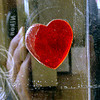 Photo by Marc FalardeauI suspect it was seeing all the Valentine hearts in shop windows that provoked this blog. It got me thinking that good picture book stories tend to be written on more than one level. At the heart of the story there will be an emotional truth. This can add inner strength to a story and make it more than just a series of events. It gives a story purpose and a writer will usually know this 'heart' when they first start writing.
Photo by Marc FalardeauI suspect it was seeing all the Valentine hearts in shop windows that provoked this blog. It got me thinking that good picture book stories tend to be written on more than one level. At the heart of the story there will be an emotional truth. This can add inner strength to a story and make it more than just a series of events. It gives a story purpose and a writer will usually know this 'heart' when they first start writing.I remember reading *Winnie the Witch to my children. It's enormous fun and at the heart of the story Winnie learns to appreciate and accept people (i.e. a black cat) for who they are. Even though the 'heart of the story' wasn't too obvious, without this underlying purpose, a delightful book would have been weaker and not so satisfying,
Julia Donaldson’s *The Snail and the Whale is also subtle about its heart. Without banging us on the head, the story tells us to be happy with who we are and that even if you're small you can do big things (and it’s within your power to save a giant whale).
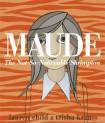 Whilst Lauren Child’s amusing *Maude: The Not-So-Noticeable Shrimpton has the same theme, although this time it’s much more overt and there's no question that you shouldn't be happy with who you are. Why? Because being unobtrusive and quiet can be a talent (stops you being eaten by tigers – bet you didn’t realise that!).
Whilst Lauren Child’s amusing *Maude: The Not-So-Noticeable Shrimpton has the same theme, although this time it’s much more overt and there's no question that you shouldn't be happy with who you are. Why? Because being unobtrusive and quiet can be a talent (stops you being eaten by tigers – bet you didn’t realise that!).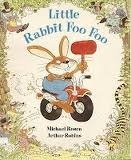 Michael Rosen’s gloriously naughty *Little Rabbit Foo Foo is another book in which the theme is clear. Without any saccharine we appreciate that everything has consequences (and don’t ignore people with power!). When the out-of-control rabbit ignores the admonishments of the adult and keeps bopping everyone on the head, he’s finally turned into a real little monster. Eek! Even very young children understand and enjoy this story.
Michael Rosen’s gloriously naughty *Little Rabbit Foo Foo is another book in which the theme is clear. Without any saccharine we appreciate that everything has consequences (and don’t ignore people with power!). When the out-of-control rabbit ignores the admonishments of the adult and keeps bopping everyone on the head, he’s finally turned into a real little monster. Eek! Even very young children understand and enjoy this story.So when I write a story I ask myself, ‘What is this story about?’ I look for two answers to my question. For example, on the surface, * Best Friends or Not? is about two little polar bears who don’t want to play the same games. Below the surface, the story is about how friendship sometimes needs compromise.
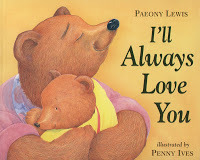 Another example is my *
I’ll Always Love You
, in which a young bear breaks his mum’s favourite honey bowl and worries that now she won’t love him. At its heart the story is about the unconditional love of a parent, although everything has consequences.
Another example is my *
I’ll Always Love You
, in which a young bear breaks his mum’s favourite honey bowl and worries that now she won’t love him. At its heart the story is about the unconditional love of a parent, although everything has consequences. Sometimes I think that the heart of these two stories is too obvious (I do write subtle stories too!). And yes, to an adult they might seem that way. That’s where it gets tricky. How deeply do we want a child to think about a story? How much is realistic? A child of three or four has little experience of the world. Therefore perhaps not all books need to be so subtle that they’ll only be understood once they’re discussed. Plus some children are further along in their development than others, and some rarely see books. Also, do most tired parents have philosophical discussions about picture books? Don't the majority simply read the stories aloud and make the most of that gentle time together at the end of the day?
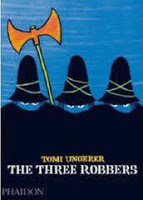 Thus should all picture books be clearly accessible to all children? No, I'm not saying that. Picture books for older children, that make everyone think, are appreciated by teachers, emotionally mature children, and those parents who don’t focus purely on the number of words in a book. Recently republished, *The Three Robbers by Tomi Ungerer is not a cuddly bedtime book. It’s stylish, vicious and disturbing and includes pepper spray and a gun. At the same time we see that perhaps good can come out of evil, that we’re all redeemable, and that people can be more valuable than glittering treasure. The illustrations also hint at hidden themes and it’s a book that could be discussed at length in a primary school. I must admit I can’t make up my mind about this book.
Thus should all picture books be clearly accessible to all children? No, I'm not saying that. Picture books for older children, that make everyone think, are appreciated by teachers, emotionally mature children, and those parents who don’t focus purely on the number of words in a book. Recently republished, *The Three Robbers by Tomi Ungerer is not a cuddly bedtime book. It’s stylish, vicious and disturbing and includes pepper spray and a gun. At the same time we see that perhaps good can come out of evil, that we’re all redeemable, and that people can be more valuable than glittering treasure. The illustrations also hint at hidden themes and it’s a book that could be discussed at length in a primary school. I must admit I can’t make up my mind about this book. A less controversial book that’s aimed at older children is *The Black Book of Colours by Menena Cottin. Yet again, here’s a book that fundamentally is about being happy with who you are. Thomas is blind and through poetic description, braille, and all-black embossed pictures, we discover there are other wondrous ways to see the world. I think it’s a shame the braille isn’t raised enough for non-sighted readers, but it’s still beautiful and a great book for discussion.
A less controversial book that’s aimed at older children is *The Black Book of Colours by Menena Cottin. Yet again, here’s a book that fundamentally is about being happy with who you are. Thomas is blind and through poetic description, braille, and all-black embossed pictures, we discover there are other wondrous ways to see the world. I think it’s a shame the braille isn’t raised enough for non-sighted readers, but it’s still beautiful and a great book for discussion.So whether you want to read or write an accessible book for young children, or a thought-provoking book for older readers, at its heart there must be an underlying purpose. Something to give strength to the story. Mind you, sometimes authors (and illustrators) don’t see all the themes and inner meanings in their own books. I’ll admit that when I wrote I’ll Always Love You, I never saw the parallels with Christianity and never anticipated its popularity with churches. Even the author doesn’t always see everything!
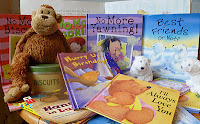 This blog post is by Paeony Lewis
This blog post is by Paeony Lewiswww.paeonylewis.com
*Picture Books listed:
Winnie theWitch by Valerie Thomas, Illus Korky Paul
The Snail and the Whale by Julia Donaldson, Illus Axel Schaffler
Maude: by Lauren Child, Illus Trisha Krauss
Little Rabbit Foo Foo by Michael Rosen, Illus Arthur Robins
Best Friends or Not? by Paeony Lewis, Illus Gaby Hansen
I'll Always Love You by Paeony Lewis, Illus Penny Ives
The Three Robbers by Tomi Ungerer
The Black Book of Colours by Menena Cottin, Illus Rosana Faria
Published on February 09, 2013 00:00
February 4, 2013
It's not only the pictures that give picture books their power... by James Catchpole of The Catchpole Agency
There are many good things about working in children’s literature.
One of them is how frequently you find yourself having earnest, reasoned conversations about not entirely reasonable things, like whether, if anthropomorphized fruit have arms and legs, cheese and eggs should too. (A reasonable conclusion turns out to be yes, but not sausages or frozen chickens – that would be weird.)
Another good thing is how that precious, childish, ragged edge of fantasy does – somehow – find its way from an author’s pen, via the stewardship of an agent, right to the top of one of those great glass cliffs in London (into which all but a few of the smaller publishers have now been subsumed), so that still, when you sign in at the desk in the sterile, corporate lobby and take the lift to the 14th floor, the clean-lined, pale-toned, open-plan office that greets you nevertheless bears its happily incongruous traces, in shelves upon shelves of beautiful, colourful, anarchic and fantastical books.
But maybe the best thing about working in children’s literature is simply the range of storytelling. True, not all subjects and not all human experiences are covered here (no sex, most obviously), but the power and breadth of children’s fantasy – fantasy as real for them as reality is for us – more than compensates. And subject isn’t everything. Think of the range of ways a story can be told, and must be told, in order to enthral someone almost fully grown, and someone so small they’ve barely begun to be.
So this range and variety might be the best thing of all, I think: to be able to work on a picturebook in the morning, and a novel in the afternoon. And probably best in that order, because there’s something special about picturebooks that sharpens the tools of storytelling (and in my case, editing).
Picturebooks are how our agency began. Celia studied to be a visual artist – a sculptor – and has used that trained eye to spot talent in illustrators, and help them develop it. I hope I’ve inherited some of her instinct in that regard, to compensate for a lack of formal training in the visual.
My training was in words,and in music, a useful diversion so I later found, because it helps hone a sense of narrative in the abstract. Composers think of narrative structure in abstraction, ABACA. Writers often conceive of structure more instinctively or superficially, but the deeper, unconscious structure of storytelling is there all the same, hidden beneath the surface flow of paragraphs and chapters.
Picturebooks, like the simplest musical forms, impose a rigorously explicit structure on narrative. Thirteen and a half spreads to do all that a story (or a piece of music, in fact) has to do: establish a home, complicate matters, leave, and then resolve and return. And somehow that little journey has to intrigue and absorb us, carry us along, move us and then finally satisfy us.
Novels, like symphonies, may go here and there, may slow to a crawl then tear ahead to the finish, but picturebooks have no room to meander. As with poems, in the best picturebooks, every word earns its place. Picturebooks are the art and the science of storytelling distilled to their essence.
And maybe, after all, that’sthe best thing about working in children’s literature: that ideal alchemy of wild, ragged fantasy, and the formal discipline of narrative, which picturebooks in particular mix and brew so well.
If you want to find out more about what Celia and I do, the link to our website is www.thecatchpoleagency.co.uk (though you may have to wait a day or two while BT chases down a cyber-gremlin that appears to have chewed through a cable, somewhere out in the ether...)
Published on February 04, 2013 04:21
January 29, 2013
Books With Very Few Words, Some With None At All - Karen Saunders
This might be quite an unusual post for a writer, but today I wanted to blog about picture books that have limited, or no text.
These sorts of books offer extensive opportunities for discussion with children, through talking about the pictures and what they can see on the pages. They also offer children the chance to ‘read’ a book by themselves, as they can understand so much of what is happening just from looking at the illustrations, encouraging reading confidence.
The pictures within these sorts of books can be interpreted so many different ways and imaginations can run riot, something that’s so important for encouraging creativity in the young. They also allow readers a chance to experience the subtle world of expressions such as body language and intonation, and begin to understand how these things work.
So here goes, my top five books that fit into this category.
You Choose, by fellow Picture Book Den blogger Pippa Goodhart, illustrated by Nick Sharatt
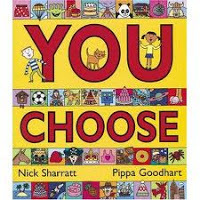 My toddler adores this award-winning picture book. We’ve found it’s particularly good for him to read and look at in the car by himself. Pippa has blogged about her book here in detail, but essentially it’s a book that's not actually a story as such, but one where children can make choices. They can decide where they’d like to live, where they’d like to go, who they'd like their friends to be, what they’d like to eat…there are many excellent discussions to be had from this book!
My toddler adores this award-winning picture book. We’ve found it’s particularly good for him to read and look at in the car by himself. Pippa has blogged about her book here in detail, but essentially it’s a book that's not actually a story as such, but one where children can make choices. They can decide where they’d like to live, where they’d like to go, who they'd like their friends to be, what they’d like to eat…there are many excellent discussions to be had from this book! Rosie’s Walk, by Pat Hutchins
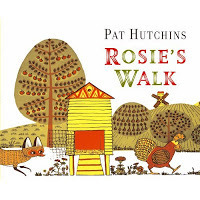 Rosie the hen goes for a walk, while a wily fox tries to catch her. Rosie is completely oblivious to everything that’s going on behind her, as the fox gets out-manoeuvred at every turn. The way the fox gets his comeuppance causes much hilarity for the reader, because although what happens to the fox is never vocalised, no words are necessary for this very visual humour. This book has limited text, but you can get the complete gist of the story from the pictures alone.
Rosie the hen goes for a walk, while a wily fox tries to catch her. Rosie is completely oblivious to everything that’s going on behind her, as the fox gets out-manoeuvred at every turn. The way the fox gets his comeuppance causes much hilarity for the reader, because although what happens to the fox is never vocalised, no words are necessary for this very visual humour. This book has limited text, but you can get the complete gist of the story from the pictures alone. Hug, by Jez Alborough
 Ah, the book that really tests an adult’s reading skills, getting them to interpret just one word, ‘Hug’, in many, many, different ways. A monkey walks through the jungle, looking for his Mummy, seeing other animals hugging along the way. It’s a great demonstration of the intonation of language, how a word can mean different things depending on how it’s said, and also of body language – we understand how the monkey is saying the word just from the expression on his face.
Ah, the book that really tests an adult’s reading skills, getting them to interpret just one word, ‘Hug’, in many, many, different ways. A monkey walks through the jungle, looking for his Mummy, seeing other animals hugging along the way. It’s a great demonstration of the intonation of language, how a word can mean different things depending on how it’s said, and also of body language – we understand how the monkey is saying the word just from the expression on his face.The Snowman, Raymond Briggs
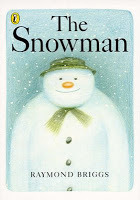 A Christmas classic that can be enjoyed anytime (For some reason, Christmas books go down particularly well in our house in the height of summer). The Snowman tells of a young boy who builds a snowman that comes to life. Beautiful illustrations do all the story-telling work, and the expressions on the young boy’s face show us how he is feeling and what he is experiencing. A wonderful first opportunity for young children to ‘read’ a story.
A Christmas classic that can be enjoyed anytime (For some reason, Christmas books go down particularly well in our house in the height of summer). The Snowman tells of a young boy who builds a snowman that comes to life. Beautiful illustrations do all the story-telling work, and the expressions on the young boy’s face show us how he is feeling and what he is experiencing. A wonderful first opportunity for young children to ‘read’ a story. The Baby’s Catalogue, Janet and Allen Ahlberg
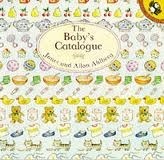 The Baby’s Catalogue is a fabulous book, which features very little text, instead it shows the lives of several babies and what they do in their days. The babies sleep, eat, watch their mummies and daddies, cause chaos in the house, play with their pets and siblings, sit in their high chairs, have their baths and go back to bed. There’s no story as such, but there are plenty of familiar things to see and discuss.
The Baby’s Catalogue is a fabulous book, which features very little text, instead it shows the lives of several babies and what they do in their days. The babies sleep, eat, watch their mummies and daddies, cause chaos in the house, play with their pets and siblings, sit in their high chairs, have their baths and go back to bed. There’s no story as such, but there are plenty of familiar things to see and discuss.These are five books I’ve loved sharing with children, but which are your favourites?
Come find me on the web at www.karensaunders.co.uk or 'like' me on Facebook at www.facebook.com/karensaunderswriter
I tweet, too, @writingkaren
Published on January 29, 2013 23:00
Books With Very Few Words, Some With None At All
This might be quite an unusual post for a writer, but today I wanted to blog about picture books that have limited, or no text.
These sorts of books offer extensive opportunities for discussion with children, through talking about the pictures and what they can see on the pages. They also offer children the chance to ‘read’ a book by themselves, as they can understand so much of what is happening just from looking at the illustrations, encouraging reading confidence.
The pictures within these sorts of books can be interpreted so many different ways and imaginations can run riot, something that’s so important for encouraging creativity in the young. They also allow readers a chance to experience the subtle world of expressions such as body language and intonation, and begin to understand how these things work.
So here goes, my top five books that fit into this category.
You Choose, by fellow Picture Book Den blogger Pippa Goodhart, illustrated by Nick Sharatt
 My toddler adores this award-winning picture book. We’ve found it’s particularly good for him to read and look at in the car by himself. Pippa has blogged about her book here in detail, but essentially it’s a book that's not actually a story as such, but one where children can make choices. They can decide where they’d like to live, where they’d like to go, who they'd like their friends to be, what they’d like to eat…there are many excellent discussions to be had from this book!
My toddler adores this award-winning picture book. We’ve found it’s particularly good for him to read and look at in the car by himself. Pippa has blogged about her book here in detail, but essentially it’s a book that's not actually a story as such, but one where children can make choices. They can decide where they’d like to live, where they’d like to go, who they'd like their friends to be, what they’d like to eat…there are many excellent discussions to be had from this book! Rosie’s Walk, by Pat Hutchins
 Rosie the hen goes for a walk, while a wily fox tries to catch her. Rosie is completely oblivious to everything that’s going on behind her, as the fox gets out-manoeuvred at every turn. The way the fox gets his comeuppance causes much hilarity for the reader, because although what happens to the fox is never vocalised, no words are necessary for this very visual humour. This book has limited text, but you can get the complete gist of the story from the pictures alone.
Rosie the hen goes for a walk, while a wily fox tries to catch her. Rosie is completely oblivious to everything that’s going on behind her, as the fox gets out-manoeuvred at every turn. The way the fox gets his comeuppance causes much hilarity for the reader, because although what happens to the fox is never vocalised, no words are necessary for this very visual humour. This book has limited text, but you can get the complete gist of the story from the pictures alone. Hug, by Jez Alborough
 Ah, the book that really tests an adult’s reading skills, getting them to interpret just one word, ‘Hug’, in many, many, different ways. A monkey walks through the jungle, looking for his Mummy, seeing other animals hugging along the way. It’s a great demonstration of the intonation of language, how a word can mean different things depending on how it’s said, and also of body language – we understand how the monkey is saying the word just from the expression on his face.
Ah, the book that really tests an adult’s reading skills, getting them to interpret just one word, ‘Hug’, in many, many, different ways. A monkey walks through the jungle, looking for his Mummy, seeing other animals hugging along the way. It’s a great demonstration of the intonation of language, how a word can mean different things depending on how it’s said, and also of body language – we understand how the monkey is saying the word just from the expression on his face.The Snowman, Raymond Briggs
 A Christmas classic that can be enjoyed anytime (For some reason, Christmas books go down particularly well in our house in the height of summer). The Snowman tells of a young boy who builds a snowman that comes to life. Beautiful illustrations do all the story-telling work, and the expressions on the young boy’s face show us how he is feeling and what he is experiencing. A wonderful first opportunity for young children to ‘read’ a story.
A Christmas classic that can be enjoyed anytime (For some reason, Christmas books go down particularly well in our house in the height of summer). The Snowman tells of a young boy who builds a snowman that comes to life. Beautiful illustrations do all the story-telling work, and the expressions on the young boy’s face show us how he is feeling and what he is experiencing. A wonderful first opportunity for young children to ‘read’ a story. The Baby’s Catalogue, Janet and Allen Ahlberg
 The Baby’s Catalogue is a fabulous book, which features very little text, instead it shows the lives of several babies and what they do in their days. The babies sleep, eat, watch their mummies and daddies, cause chaos in the house, play with their pets and siblings, sit in their high chairs, have their baths and go back to bed. There’s no story as such, but there are plenty of familiar things to see and discuss.
The Baby’s Catalogue is a fabulous book, which features very little text, instead it shows the lives of several babies and what they do in their days. The babies sleep, eat, watch their mummies and daddies, cause chaos in the house, play with their pets and siblings, sit in their high chairs, have their baths and go back to bed. There’s no story as such, but there are plenty of familiar things to see and discuss.These are five books I’ve loved sharing with children, but which are your favourites?
Come find me on the web at www.karensaunders.co.uk or 'like' me on Facebook at www.facebook.com/karensaunderswriter
I tweet, too, @writingkaren
Published on January 29, 2013 23:00
January 23, 2013
Some thoughts on rhythm in picture books - Moira Butterfield
<!-- /* Font Definitions */ @font-face {font-family:Cambria; panose-1:2 4 5 3 5 4 6 3 2 4; mso-font-charset:0; mso-generic-font-family:auto; mso-font-pitch:variable; mso-font-signature:3 0 0 0 1 0;} /* Style Definitions */ p.MsoNormal, li.MsoNormal, div.MsoNormal {mso-style-parent:""; margin-top:0cm; margin-right:0cm; margin-bottom:10.0pt; margin-left:0cm; mso-pagination:widow-orphan; font-size:12.0pt; font-family:"Times New Roman"; mso-ascii-font-family:Cambria; mso-ascii-theme-font:minor-latin; mso-fareast-font-family:Cambria; mso-fareast-theme-font:minor-latin; mso-hansi-font-family:Cambria; mso-hansi-theme-font:minor-latin; mso-bidi-font-family:"Times New Roman"; mso-bidi-theme-font:minor-bidi; mso-ansi-language:EN-US;} @page Section1 {size:612.0pt 792.0pt; margin:72.0pt 90.0pt 72.0pt 90.0pt; mso-header-margin:36.0pt; mso-footer-margin:36.0pt; mso-paper-source:0;} div.Section1 {page:Section1;} </style> <br /><div class="MsoNormal" style="mso-outline-level: 1;"><span lang="EN-US"> </span></div><div class="MsoNormal"><span lang="EN-US">When I first started to think about this blog I was going to relay the good news that rhythm, offered to small children in the form of songs, poetry and picture books, helps to develop the brain. Now, thanks to the BBC, I’ve discovered that rhythm is even more important than that. Turns out it’s vital to humankind! </span><br /><br /><span lang="EN-US"><span lang="EN-US">Good rhyme helps to anchor a text beautifully and is great fun to read, of course, but this blog is about rhythm – a pattern of beats in a sentence that makes it easy, natural and fun to read. It does a lot more than that, it seems. </span></span></div><div class="MsoNormal"><br /><span lang="EN-US">A couple of weeks ago I saw a TV programme (Science Club) in which a small baby had a little hatful of brain sensors popped on her tiny head. Experiments proved that her brain was not merely responding to rhythm but predicting what would come next. The baby had the innate ability to follow sound patterns, which would in turn help her to develop language (and possibly maths, too). This, the scientists suggested, was what separated humans from the rest of animal kind and might have helped them to start communicating in a sophisticated language when everything else was still squeaking and growling. In other words, it seems we’re hard-wired to pick up on rhythm and it helps us eventually to learn to speak. </span></div><div class="MsoNormal"><br /><span lang="EN-US">Scientists studying brain development confirm that rhythm helps small children to grow their neural pathways. Very young humans grow their brains at a phenomenal rate, sparking up these neural pathways all over the place – like a tree growing branches. These brain connections help us to do things. Babies start off not doing very much, and as they grow into toddlers and beyond they make more and more neural connections and so start engaging with the world. Rhythm helps to create the neural pathways and repetition helps to strengthen them. </span></div><div class="MsoNormal"><br /><span lang="EN-US">Perhaps all this is why adults instinctively sing nursery rhymes and ‘coo’ to babies. It most definitely suggests that it’s a good idea to read and reread rhythmic text to all small growing children, even the tiny ones. It turns out that babies quickly start to look intently at lips to work out how to copy the shapes that talking makes. So repeated rhythmic sentences (rereading that seemingly simple but well-crafted picture book regularly) can only help. </span></div><div class="MsoNormal"><table cellpadding="0" cellspacing="0" class="tr-caption-container" style="margin-left: auto; margin-right: auto; text-align: center;"><tbody><tr><td style="text-align: center;"><a href="http://2.bp.blogspot.com/-YBDbxPClsh8..." imageanchor="1" style="clear: left; margin-bottom: 1em; margin-left: auto; margin-right: auto;"><img border="0" height="320" src="http://2.bp.blogspot.com/-YBDbxPClsh8..." width="214" /></a></td></tr><tr><td class="tr-caption" style="text-align: center;">"Mum, I think my brain just got smarter!" </td></tr></tbody></table><br /><span lang="EN-US">Science is beginning to prove what we already innately sense. I like to think of parents in prehistory starting it off, perhaps imitating a rhythmic bird call for their babies, then trying it on a drum.</span></div><div class="MsoNormal"><span lang="EN-US">For my part, I think rhythm has an amazing power to help memory. Many’s the time I’ve marvelled at how my brain recalls great chunks of meaningless non-rhyming pop lyrics from long-forgotten songs that weren’t important to me. They just stuck in my head. I think they were glued in by the musical rhythm. </span></div><div class="MsoNormal"><br /><span lang="EN-US">Apart from having these learning superpowers, rhythm in a sentence is vital to someone reading out loud, of course. It makes the reading smooth and natural. Bad rhythm snags the reader, like tripping over a stone. </span></div><div class="MsoNormal"><br /><span lang="EN-US">Rhythmic sentences could be said to be a form of spoken music– the structure of a tune without the tune. In fact, a good rhythmic picture book text is easy to sing, and after countless reads of the same picture book to my sons I’ve been known to do exactly that, to vary the experience for us all. </span></div><div class="MsoNormal"><br /><span lang="EN-US">So rhythm helps the reader to make the experience of reading a picture book engaging one for all concerned. </span></div><div class="MsoNormal"><br /><span lang="EN-US">To sum up, rhythmic sentences – those that have a good working beat pattern like the beats of a song line – are a powerful tool for helping children learn communication, and they are a vital aid to the reader. </span></div><div class="MsoNormal"><br /><span lang="EN-US">In my next blog I’ll do some deconstructing of the best rhythmic non-rhyming sentences in picture book examples, to discover what works best. I’ll also be examining where problems can occur. All recommended text examples welcome. </span></div><div class="MsoNormal"><table align="center" cellpadding="0" cellspacing="0" class="tr-caption-container" style="margin-left: auto; margin-right: auto; text-align: center;"><tbody><tr><td style="text-align: center;"><a href="http://4.bp.blogspot.com/-ROiVb6GMCvI..." imageanchor="1" style="margin-left: auto; margin-right: auto;"><img border="0" height="320" src="http://4.bp.blogspot.com/-ROiVb6GMCvI..." width="213" /></a></td></tr><tr><td class="tr-caption" style="text-align: center;">"I think I'll read War and Peace next."</td></tr></tbody></table><br /><span lang="EN-US">In the meantime you can bask in the knowledge that by writing rhythmic sentences you are not only making them easier to read but you are helping to develop children’s brains. </span></div><div class="MsoNormal"><br /><span lang="EN-US">You probably knew so, but now scientists have said so! </span></div>
Published on January 23, 2013 04:21
January 19, 2013
Want to see my writing desk? (Malachy Doyle)
I’ve always been fascinated by shots of writers’ and artists’ workspaces, so if you want a snoop at the desk of a picture book writer, here’s mine, at the end of a working day.
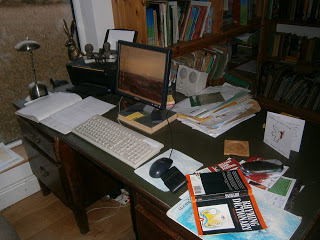 On the printer are two sculptures of me and my wife, Liz, made by our clever son, Liam, and given to us as Christmas presents. He usually works on blood and gore for horror films, so it’s nice to see him making something pleasant for once (Liz, I mean, not me…). Also a top shell picked up on one of my walks round the island where I live, and a gecko bought in Santiago at the end of my Camino back in November.
On the printer are two sculptures of me and my wife, Liz, made by our clever son, Liam, and given to us as Christmas presents. He usually works on blood and gore for horror films, so it’s nice to see him making something pleasant for once (Liz, I mean, not me…). Also a top shell picked up on one of my walks round the island where I live, and a gecko bought in Santiago at the end of my Camino back in November.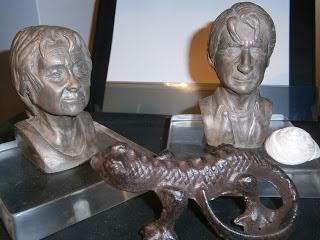
Next to the printer is a beautiful bronze hare, who’s watched over me for many moons as I write. Sitting at his feet is a little art deco rabbit.
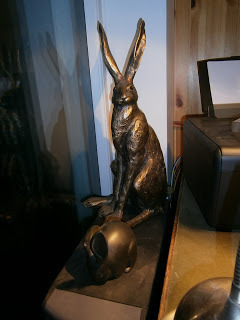 On my screensaver is a photo of the view from my window, over the water to Errigal - my mountain, my muse. It was taken when there was snow on top - a rare but magical event. Every afternoon I walk the beaches of my island with my dogs, but occasionally, if I've written something I'm really pleased with (or just need a dose of Errigal exhilaration, for whatever reason), I treat myself to a walk up the mountain.
On my screensaver is a photo of the view from my window, over the water to Errigal - my mountain, my muse. It was taken when there was snow on top - a rare but magical event. Every afternoon I walk the beaches of my island with my dogs, but occasionally, if I've written something I'm really pleased with (or just need a dose of Errigal exhilaration, for whatever reason), I treat myself to a walk up the mountain. Next to the keyboard is a card drawn by my good friend (and illustrator of three of my books) Jac Jones. ‘Peace beyond Christmas’ Jac’s written, in English and Welsh, and inside he credits the image as ‘copyright Jones and Picasso.’
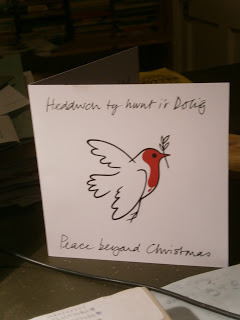 On my desk (a massive old green-leather-topped lawyer’s desk – I love it!) is my Penguin Rhyming Dictionary – an essential tool for any picture book writer who succumbs to the temptation to versify.
On my desk (a massive old green-leather-topped lawyer’s desk – I love it!) is my Penguin Rhyming Dictionary – an essential tool for any picture book writer who succumbs to the temptation to versify. On the sheet of paper next to the keyboard is a print-out of the last thing I’d written. A little bit of fluff that maybe might sneak its way onto the back page of a future picture book:
This story was written with gleeBy someone anonymous. Me!My name I refuse to disclose.Can you guess by my stupendous nose?
(I'm seeing an illustration here of a masked man with a mighty schnozz)
Oh no, I’ve just noticed – go on take a look – It’s written right there at the front of the book!(And the pictures are great, don’t you think? Well, I do!They’re by ….. ....., and they’re specially for you.)
Under the rhyming dictionary is a copy of The Snow Queen illustrated by Bernadette Watts. I love both the story and the illustrations, but the real reason it’s on my desk is because it’s a hardback that’s big enough to carry round the house (and outside) with print-outs of my stories on. For me to catch my story by surprise, reading it aloud in the shed, the garden, the toilet... To give to Liz to read and comment on (with her big pink pen)... It’s always this book. It’s become a ritual, a totem, like my hare, my island, my mountain...
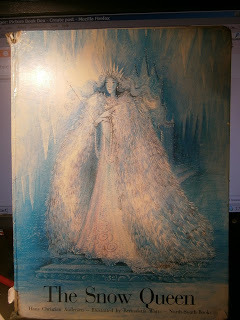
In the background some of my children’s books, including a shelf of foreign editions of ones I’ve written. I particularly like when they come through in Korean! (This is Charlie is My Darling, by the way.)
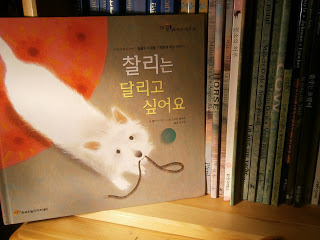 I'm hoping some other Picture Book Denners might add to this posting, showing us their desk and maybe telling us a little about it - the more untidy the better!
I'm hoping some other Picture Book Denners might add to this posting, showing us their desk and maybe telling us a little about it - the more untidy the better!And if anyone else would like to tell us about where they write, and what's around them as they do so, it'd be lovely to hear from you.
Published on January 19, 2013 17:00
January 15, 2013
The Gate Keepers - Lynne Garner
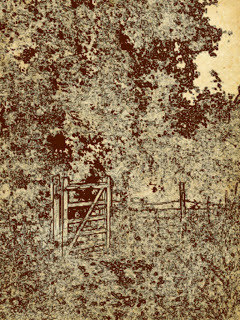 As a picture book writer I'm very aware I have to write a story not only children will love but also a story that a whole list of people I call 'the gatekeepers' will enjoy. This list consists of:Commissioning editorMarketing departmentBooksellerPurchaser
As a picture book writer I'm very aware I have to write a story not only children will love but also a story that a whole list of people I call 'the gatekeepers' will enjoy. This list consists of:Commissioning editorMarketing departmentBooksellerPurchaser This is a lot of people to get my story passed before it lands in front of the eyes of a child. I therefore have to ensure my story fulfills the criteria each one of these gatekeepers has. So let's consider each of them: Commissioning editorIt's very difficult if not impossible to work out what editors want. However I've found many prefer a story to be character led. So when writing I have to try to create a strong character. Often this character has to overcome a conflict or shows signs of 'growth' during the story. So a plot has to have a strong start, an interesting middle and a satisfying end.
Marketing departmentA marketing department require a book that can be sold globally. This is the reason some publishers prefer animals as main characters because they can cross most borders. The marketing department also want a book that will sell well to a parent or grandparent but also someone buying for an institution such as a school or library.
BooksellerSimilar to the marketing department a bookseller require a book they can place on their shelves and will sell itself (they don't have the time or money to 'push' every book they hold in stock). This is why so much time is spent on the 'look' of a book.
Purchaser Let's be realistic although a picture book is aimed at children it is an adult who purchases it. They are looking for a story they won't mind reading 10, 20, 30 or more times. So they are not only looking for a book that is interesting to read but also one they find visually pleasing.
So I was wondering what picture book have you picked up recently and thought these gatekeepers know/don't know what makes a good book.
Published on January 15, 2013 00:00
January 11, 2013
What Shall I Write for a Story –and When? Or Using Other People’s Pictures, Things and Ideas for Inspiration in Writing; and How to Spend Less Time ‘Writing’ and Get More Done, by Juliet Clare Bell.
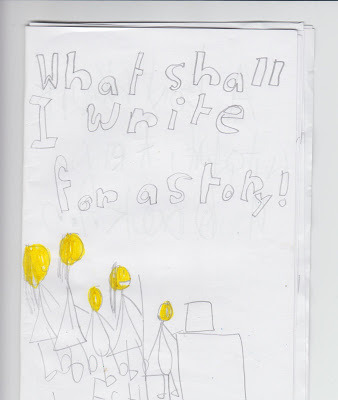
Happy New Year!
This year, I’m clearing space (physically and mentally) to be surrounded by things and people I love and appreciate everything around me. In this post, I want to share things that inspire me, in case they spark any ideas for your own stories, too. There will be lots of children’s pictures, which I’ve scanned during a massive clear-out, and magnetic words on whiteboards, and word games. Things that I often encourage other people to do (especially children in school visits) but don’t use enough myself. Or didn’t. This year I will.
And then, I’m going to 'fess up and talk about some changes I’ve made to my everyday life and writing life which will help me get more done –in writing (and everything associated with it) and in life. But first...
New Year, New Ideas...
I’ve always enjoyed seeing children’s pictures online. They can spark ideas for stories in so many ways –a new character, a story line, a feeling... Perhaps some of them will get you thinking about your current story ideas or possible new ones, so here goes (with huge thanks to my lovely children).
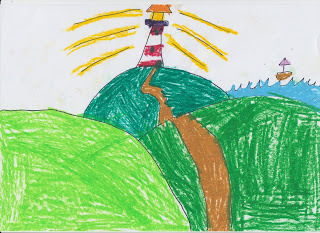
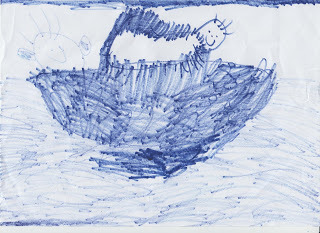
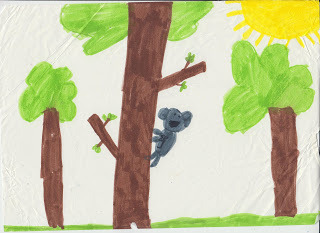
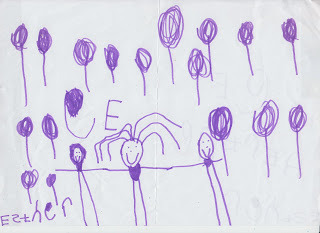
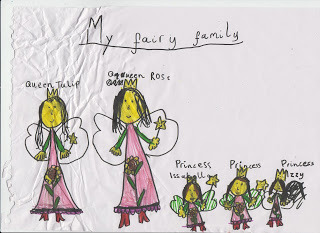
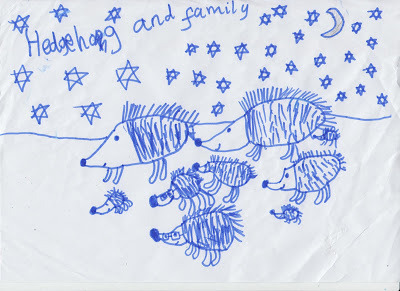
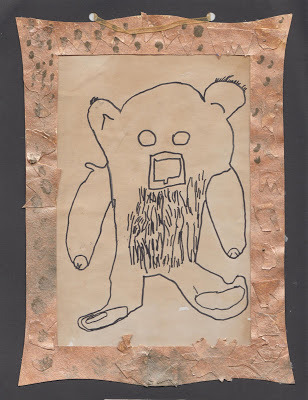
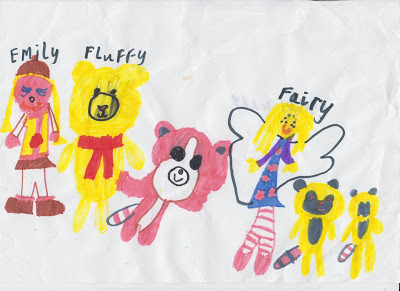
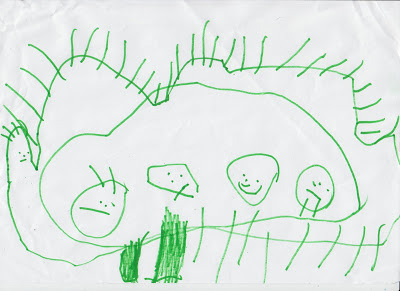
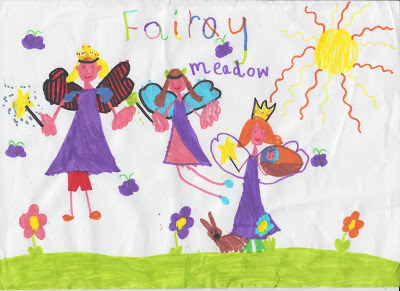
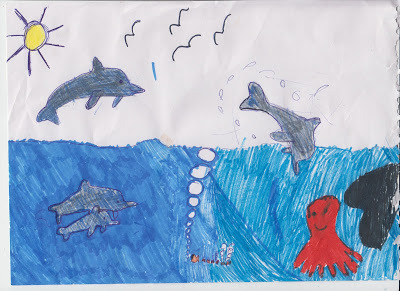
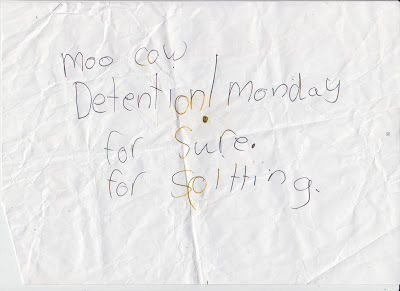
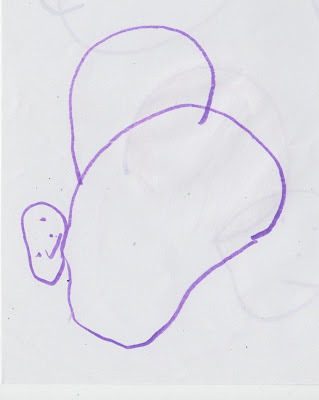
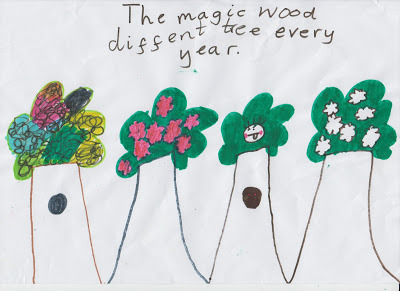
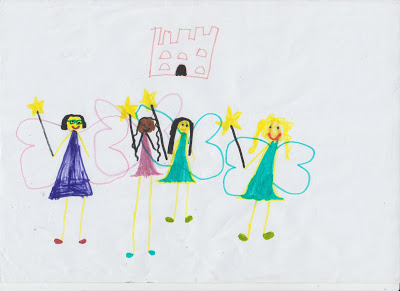
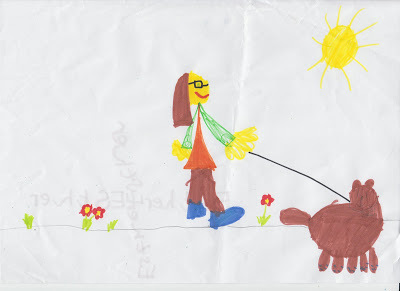
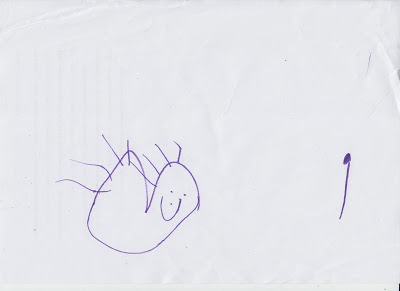
(I love this hedgehog one so much, I've had to do a close up of it -and I am currently revising a story with a hedgehog in it...)
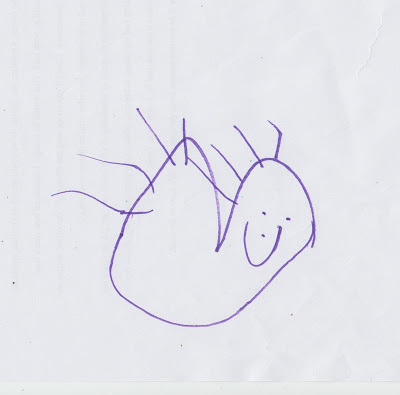
I also had to remove one when previewing this blogpost as it gave me such a good idea for a story with a title and everything...
Some pictures are more unusual and have got me thinking about stories quite different from what I’d normally write (with some, frankly, quite scary)...
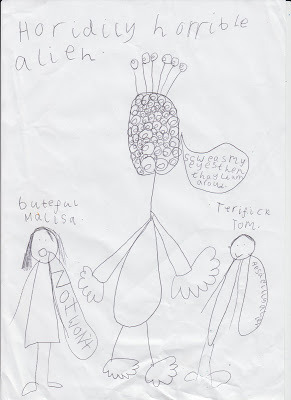
(If you're having trouble reading, this one says [Alien]: Squeeze my eyes then they'll turn around; [Girl]: No I won't; [Boy]: He's a silly alien)
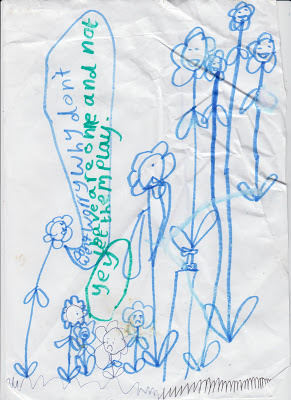
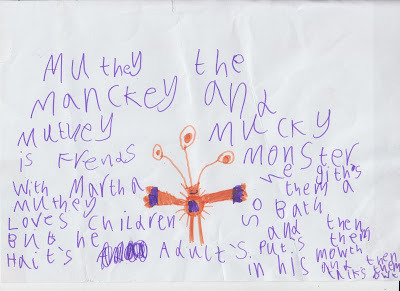
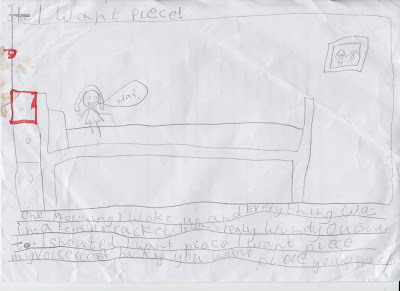
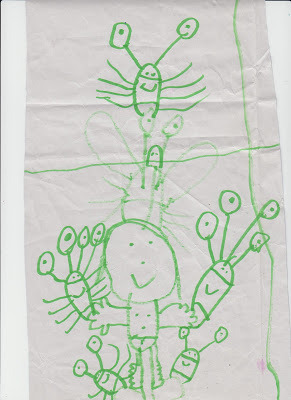
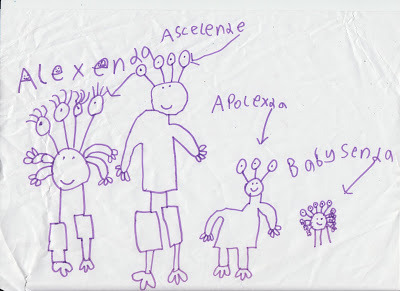
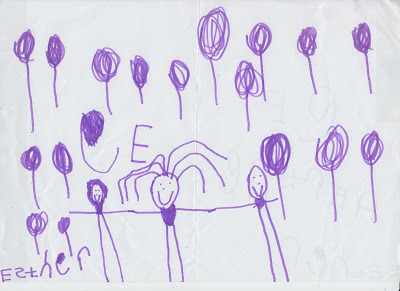
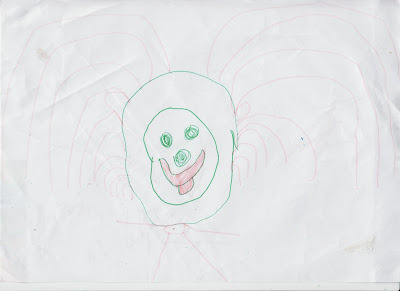
And some just make me really, really happy...
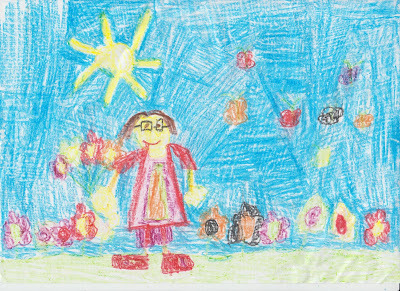
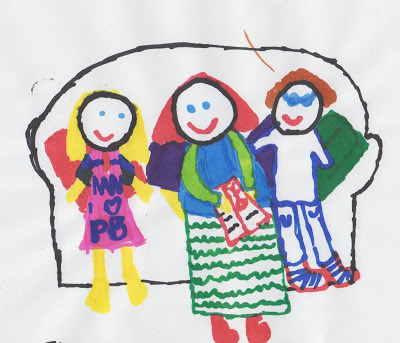
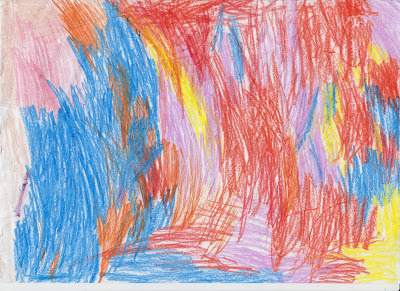
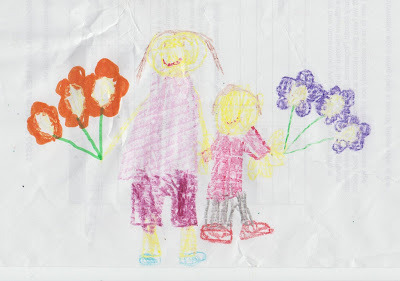
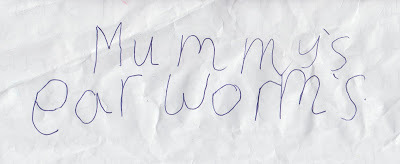
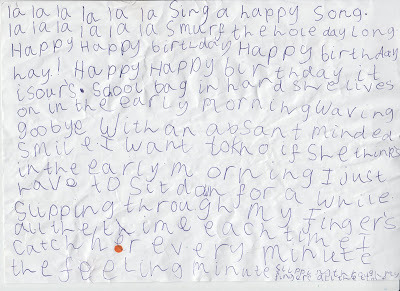
(This one was left around so that when I'd finally lost my annoying ear worms, I'd read this and they'd start again...)

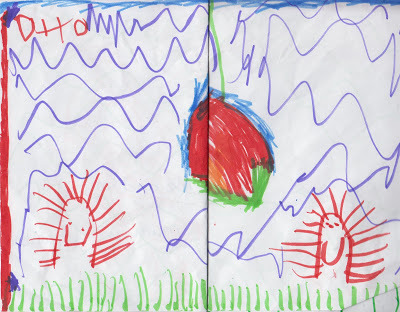
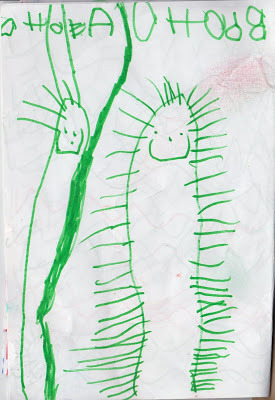
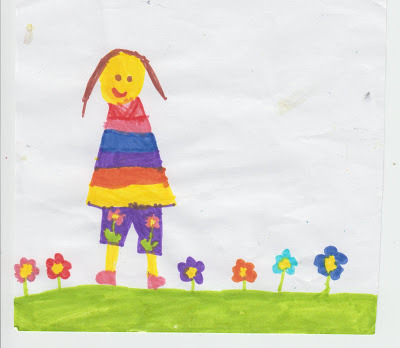
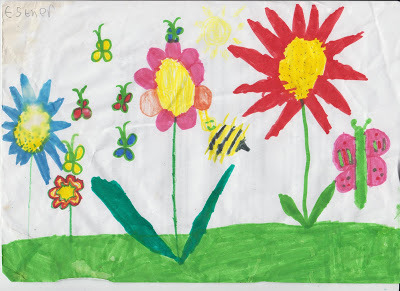
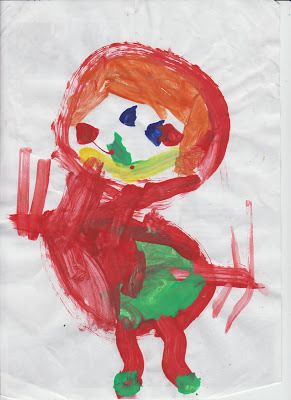

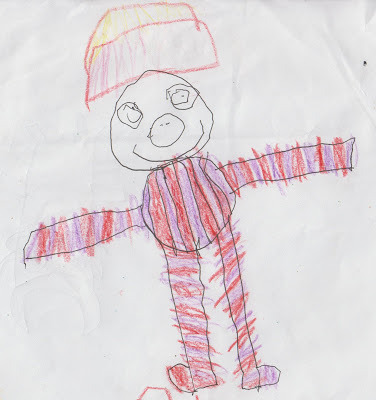
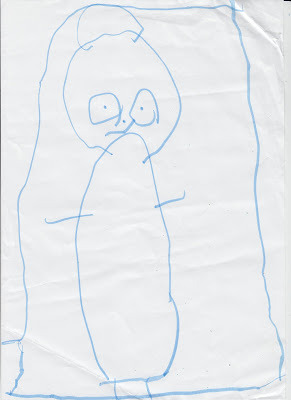
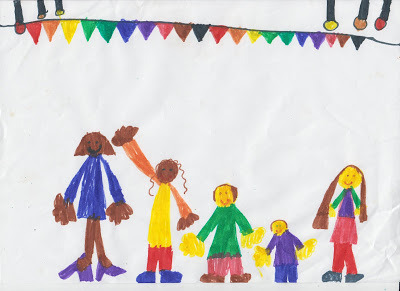
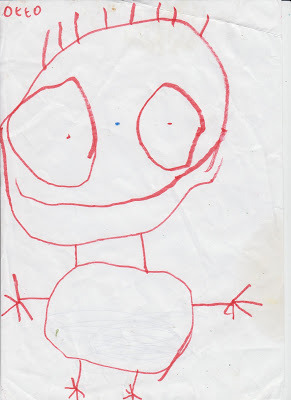
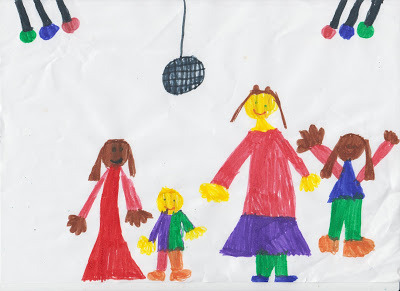
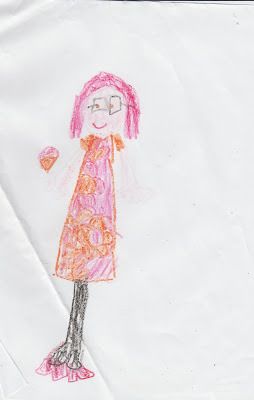
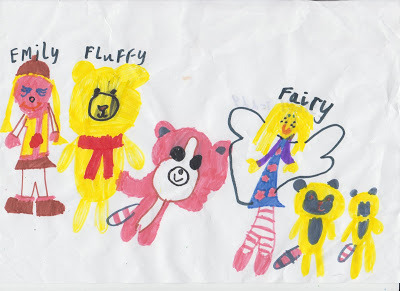
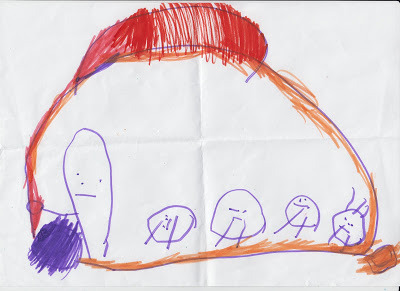
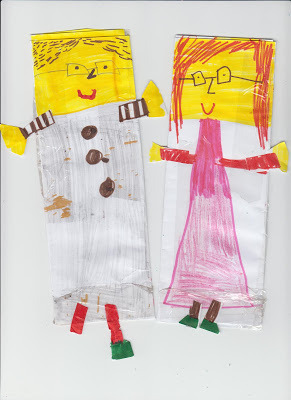
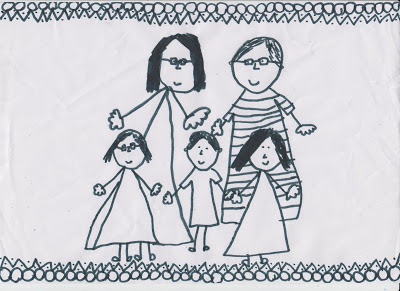
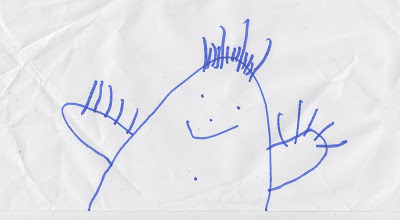
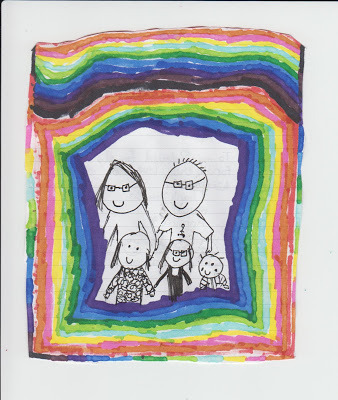
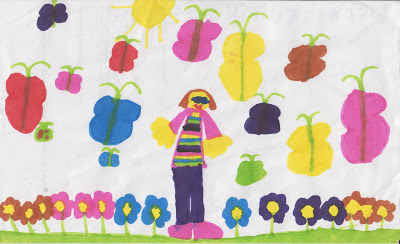
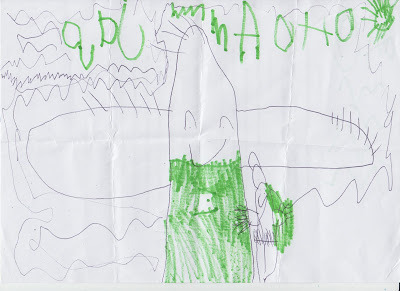
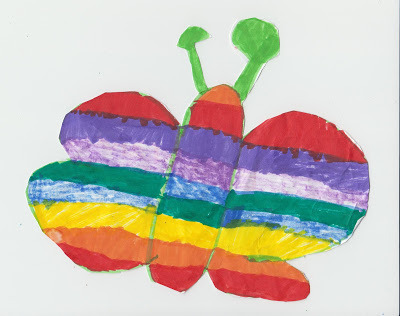
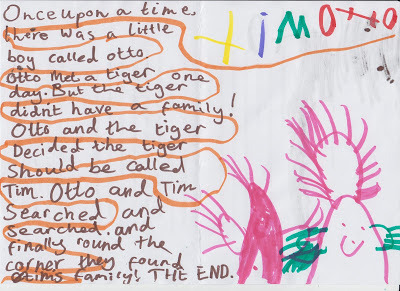
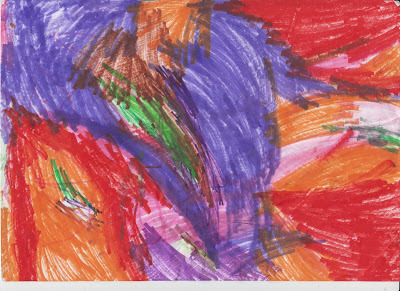
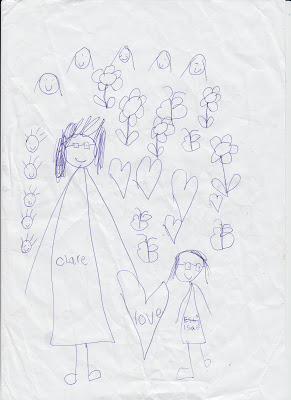
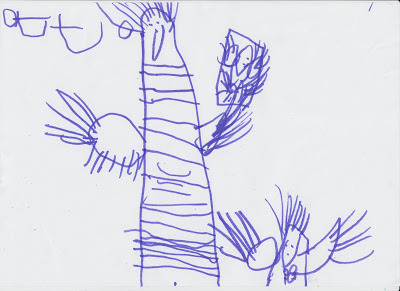
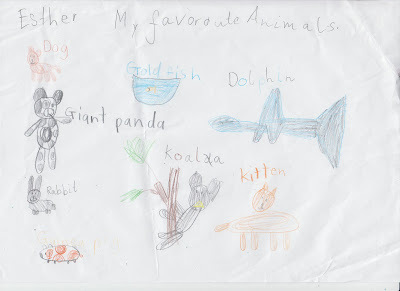
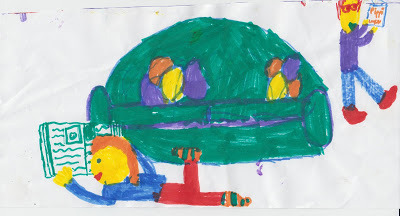
And then there’s playing around with magnetic words. Here are a few that my nine-year-old made the other night before bed (her bedroom and the office now share a room so she keeps playing with all my school visit stuff). They’re great –I think that magnetic poetry was actually devised by a guy who wrote song lyrics and had writer’s block so made some to help himself...
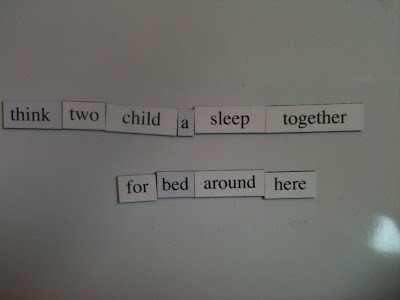
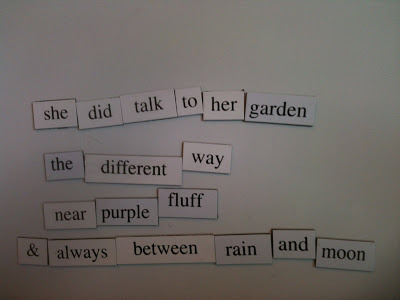
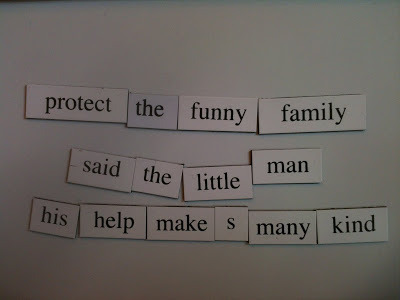
And then children’s word games... again, my nine-year-old’s been reading her new Tracy Beaker and Jacqueline Wilson annuals...
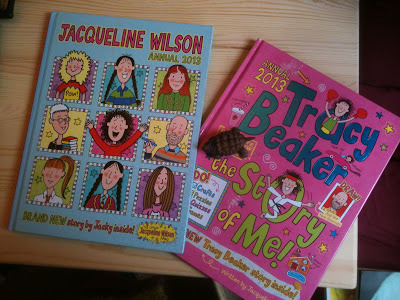
In them are ideas for creating silly stories by rolling dice and reading the beginning of a sentence followed by one of six silly scenarios (depending on the roll of the dice), then reading the next sentence starter, followed by one of another six silly scenarios etc.. After trying this out, she decided to have a go at making her own up:
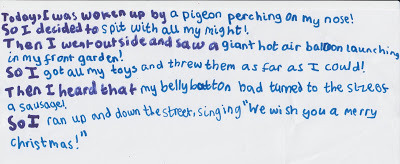
I’m going to have a go at doing some myself and see if I come up with anything I can turn into something... (I had lots of fun doing something a little similar at a workshop run by illustrator John Shelley once, but with incongruous characters/places that we drew, too. I always thought I’d have another go at it but didn’t. Until now...).
But what to do with all these potential new ideas? After all, we’ve just had PiBoIdMo (Picture Book Ideas Month, which happens every November thanks to picture book author Tara Lazar) so I’ve got loads of ideas already. Well, I’ve been having a big clear out and shake up and I’m finally, for the first time in my life, getting...
ORGANISED! (cue scary music)
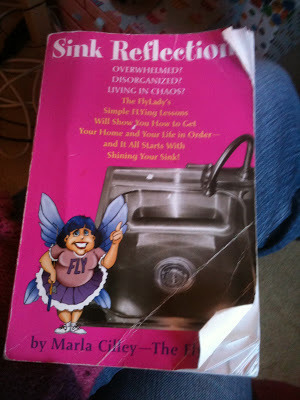 (Almost as good as a picture book. Thank you, FlyLady.)
(Almost as good as a picture book. Thank you, FlyLady.)How to spend less time ‘writing’ and get more done.
I remember as a child thinking that the phrase: ‘If you want something doing, ask a busy person’ was a silly one. I’m still not a fan of the phrase (because of the tone in which it’s usually said), but there’s a lot more truth to it than I gave it credit for.
When I had all the time in the world, pre-children, I did long working hours in my job at a university, and felt that I absolutely had to work that long in order to get the job done. There was always so much more to do.
Then I had my first baby, who cried lots and didn’t like to sleep. I’d left my paid job to be a stay at home mother, the job I’d always most wanted to do. Very soon (when my daughter was about eight weeks old) I got the picture book bug and started writing. It was in short snippets –often really short snippets of ten minutes or so, a few times a week. But I let things play around in my head so that when I did get the chance to sit and write, I was focused. Having very little time, made me way more productive with writing than I’d ever been in my previous job.
More than eight years later and the youngest of my three started school full-time, back in September. What an incredible opportunity. I thought it would give me loads more time to write and everything associated with it (doing school visits/generating work etc) and, more important, get the house sorted. And yet it didn’t. I found myself slipping back into my pre-child work pattern of losing focus because I had more time to. I found myself being more distracted by FaceBook and other writers’ lives... and I wasn’t sorting out the house any more than I ever had. Ever.
So I’ve recreated some of the lack of time that seemed to have made me more productive when I was sleep-deprived. I now spend far less time writing every day than I (THOUGHT I) was doing last term when I was at home during the day without the children. And do you know what? So far (ok, it’s only been a week), it’s really worked. I’m way more focused. I’ve done what loads of people do all the time without having to talk about it and think about it: got myself more organised. I now have a diary, a calendar...
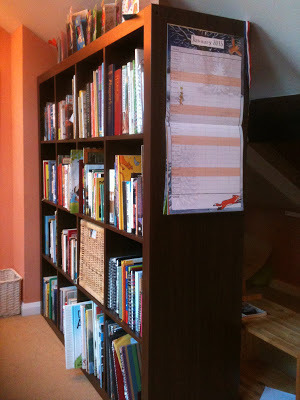
(See, I have an actual calendar -and a diary- and I'm not afraid to use them.)
... and most important, a PLAN. It’s a daily plan (Monday to Friday), telling me what I’m doing and when. Lots of people would laugh but for someone who is naturally disorganised, it feels revolutionary (and like a massive weight’s been taken off –thank you, Fly Lady!). I can just do as I’m told:
I write when I’m scheduled to -6-7am three times a week for brainstorming new picture book ideas, and 9.30-11.30 for writing my current work in progress. Crucially, I’m not online during that time. That’s proper writing time, when I don’t do anything else -as opposed to last term when I thought I was writing all day every day, but clearly wasn't. The rest of the day? I do what I’m told, when I’m told -so sorting out school visits, or working on my website, or doing SCBWI things etc., and, again, crucially, which part of the house I'm sorting out, each one scheduled at the same time on the same day each week.
I’d read about how to get organised/be more efficient lots of times but it’s only now that I’ve actually really believed I can do it. So I can. (If there’s anyone else out there who really struggles to be organised, especially in the home, then try Fly Lady –for me, it’s brilliant.)
So bring on 2013. This is the year for surrounding myself with love instead of junk. (I always have had lovely people and things around me but this year I’ll be able to see more of them without having to remove the boxes and bags of junk in their way. I’ll probably find some extra children I didn’t even know I had, and there’s definitely a husband hidden somewhere...).
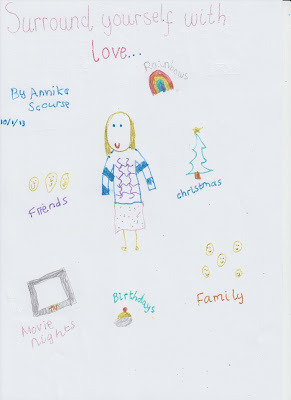
And my writing environment? I can’t even show you what it was (too terrifying) but I’ve moved up into the attic which is now the office and my nine year old’s bedroom (“On one condition: that you keep it tidy”. That was her to me, not the other way around –and, for the first time in my life, I WILL). This is my desk now:
 Surrounded by love, inspiration and things that make me really happy: a picture of an olive tree, painted by my mum, Margaret Storr; another, by my illustrator friend, Jess Mikhail. Then there’s Quentin Blake’s new book, which I love knowing is there for me to see whenever I want to; a happy pin-board; a book of poems by Robert Frost; a fifteen-year-old dinosaur toy for a story I’m thinking about; and some photos, including, on the right, the person who makes all this possible, Mark. There’s even enough room for my computer and notebook...
Surrounded by love, inspiration and things that make me really happy: a picture of an olive tree, painted by my mum, Margaret Storr; another, by my illustrator friend, Jess Mikhail. Then there’s Quentin Blake’s new book, which I love knowing is there for me to see whenever I want to; a happy pin-board; a book of poems by Robert Frost; a fifteen-year-old dinosaur toy for a story I’m thinking about; and some photos, including, on the right, the person who makes all this possible, Mark. There’s even enough room for my computer and notebook...And a close up of my happy pin-board:
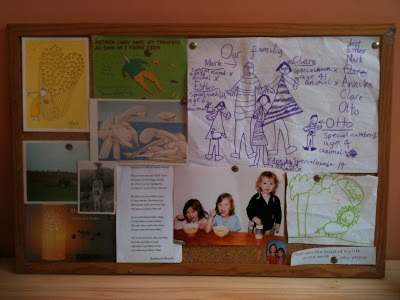
Have a truly inspirational and extremely happy new year, filled with love, writing, reading and lots and lots of children’s pictures.
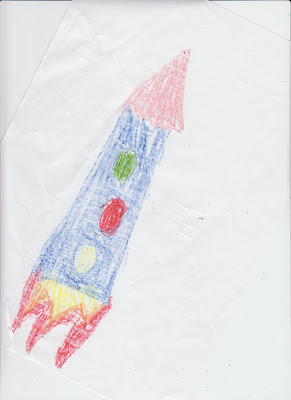
Published on January 11, 2013 06:46
January 5, 2013
Why do you write picture books? by Jane Clarke
I didn't set out to be a picture book writer.
I loved sharing picture books and making up stories for my sons when they were small, but it never occurred to me then to try to write one. Archaeology and history were my thing. My books and my writing were weighty and academic.
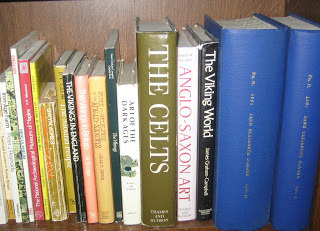
Then my husband’s work took us to the Netherlands, and my much-loved job had to be left behind. I did some substitute teaching at Antwerp International School and became a part time library assistant there.
The best part of the job was reading picture books aloud to classes of children in Pre-Kindergarten, Kindergarten and First Grade and helping them choose their books. I learned how picture books could work on different levels for the adult reader as well as the child listener, and how clever yet deceptively simple they could be. Soon, picture books were my favourite books in the library.
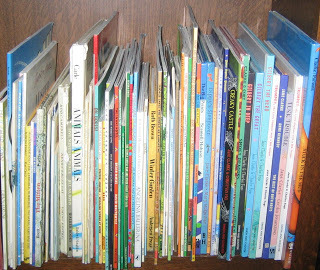 Then one day, Jasmine, a little girl in Grade 1 asked for a book about ‘a princess, a rabbit and shopping.’ She wouldn’t take ‘no’ for an answer and came back day after day to find out if the library had one yet. She was so persistent I ended up saying I’d write her a story - Hoppy Shopping, Princess Jasmine. I enjoyed the challenge of cutting down the word count and as I revised it, and cut the text into pages, the pictures began to form in my mind…
Then one day, Jasmine, a little girl in Grade 1 asked for a book about ‘a princess, a rabbit and shopping.’ She wouldn’t take ‘no’ for an answer and came back day after day to find out if the library had one yet. She was so persistent I ended up saying I’d write her a story - Hoppy Shopping, Princess Jasmine. I enjoyed the challenge of cutting down the word count and as I revised it, and cut the text into pages, the pictures began to form in my mind…
I had a lot to learn and it was a long journey before my first published picture book was in the library:
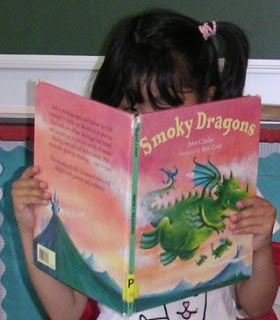
Although Hoppy Shopping, Princess Jasmine never made it into print, the Jasmine moment is the moment I became a picture book writer.
What’s yours?
I loved sharing picture books and making up stories for my sons when they were small, but it never occurred to me then to try to write one. Archaeology and history were my thing. My books and my writing were weighty and academic.

Then my husband’s work took us to the Netherlands, and my much-loved job had to be left behind. I did some substitute teaching at Antwerp International School and became a part time library assistant there.
The best part of the job was reading picture books aloud to classes of children in Pre-Kindergarten, Kindergarten and First Grade and helping them choose their books. I learned how picture books could work on different levels for the adult reader as well as the child listener, and how clever yet deceptively simple they could be. Soon, picture books were my favourite books in the library.
 Then one day, Jasmine, a little girl in Grade 1 asked for a book about ‘a princess, a rabbit and shopping.’ She wouldn’t take ‘no’ for an answer and came back day after day to find out if the library had one yet. She was so persistent I ended up saying I’d write her a story - Hoppy Shopping, Princess Jasmine. I enjoyed the challenge of cutting down the word count and as I revised it, and cut the text into pages, the pictures began to form in my mind…
Then one day, Jasmine, a little girl in Grade 1 asked for a book about ‘a princess, a rabbit and shopping.’ She wouldn’t take ‘no’ for an answer and came back day after day to find out if the library had one yet. She was so persistent I ended up saying I’d write her a story - Hoppy Shopping, Princess Jasmine. I enjoyed the challenge of cutting down the word count and as I revised it, and cut the text into pages, the pictures began to form in my mind…I had a lot to learn and it was a long journey before my first published picture book was in the library:

Although Hoppy Shopping, Princess Jasmine never made it into print, the Jasmine moment is the moment I became a picture book writer.
What’s yours?
Published on January 05, 2013 00:00
December 31, 2012
Celebrating our 1st year and our wonderful guest bloggers
Our first year at Picturebook Den has been very exciting thanks to the great blogs from my fellow team members, contributions from our guest bloggers and also the comments from you, our readers.
Alongside our dedicated Picturebook Den team, we invited a whole range of guest bloggers to add their take on anything relating to picture books. So if you have a moment you might like to browse these by clicking on the links to their blogs, featuring advice and fascinating viewpoints on a variety of subjects.
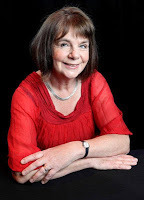
There have been blogs about where ideas come from, about the process of writing a picture book, about editing and reading picture books and our favourite books. We have heard from individual writers sharing their expertise and experience.
In this the final blog of 2012 I wanted to look back at the fascinating blogs our Guest Bloggers have written since we started, almost exactly a year ago at the very end of December 2011.
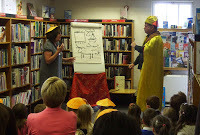 When we invited Julia Donaldson, Children's Laureate and author of The Gruffalo and so many other wonderful picture books, she talked about how she goes about dramatising picture books
When we invited Julia Donaldson, Children's Laureate and author of The Gruffalo and so many other wonderful picture books, she talked about how she goes about dramatising picture books

Being truly international we had a guest blog from John Shelley talking about illustrating picture books for Japan in a Yen for drawing
Other amazing illustrators also shared their approaches and thoughts on working on picture books -
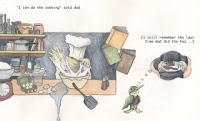 - such as John Hamilton in A spontaneous reaction
- such as John Hamilton in A spontaneous reaction
and Emmeline Pidgen in An illustrator's view

We heard about another area of picture book creation from designer and packager Tony Potter in Packagers, picture-books and pop-ups.
and from Kath Jewitt an editor, writer and project manager in her blog Let's get physical
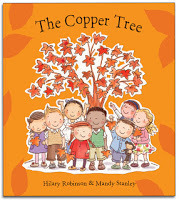
Other bloggers talked about content and approach.
Hilary Robinson discussed How to talk to children about death in her insightful blog,
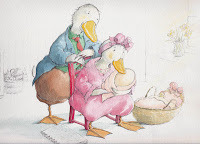
Penny Ives wrote about being a reading omnivore
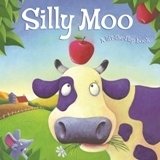 Karen King told us about My too dangerous picture book
Karen King told us about My too dangerous picture book
and Wendy Meddour described how inspiration for picture books is not always soft and fluffy in A little bit of trauma goes long way
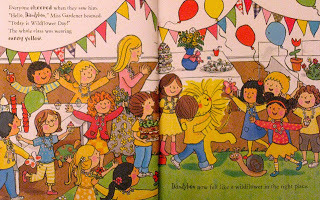 Natascha Biebow wrote about What motivates your characters an important ingredient in any picture book.
Natascha Biebow wrote about What motivates your characters an important ingredient in any picture book.
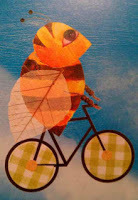
Alison Boyle discussed story themes in bee-rocracies and hierarchies
and she also wrote about Why we write
Joyce Dunbar showed how children's books are part of everything around us in Children's books and olympic ceremony
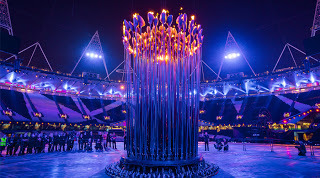 As you can see our Guest Bloggers covered a wide range of fascinating topics this year and I hope you will agree that they truly complemented the wide range of informative blogs from our own team.
As you can see our Guest Bloggers covered a wide range of fascinating topics this year and I hope you will agree that they truly complemented the wide range of informative blogs from our own team.
In 2013 we will be bringing you many new thoughts on all aspects of picture books and we have some great guest bloggers lined up too.
Why not leave a comment and tell us what your favourite Picture Book Den Blog was this year and if there is anything you would like to hear about in the coming months.
But for now on behalf of all of us here on PICTUREBOOK DEN
I wish you a happy healthy and successful year ahead in 2013
-----------------------------------------------------------------------------
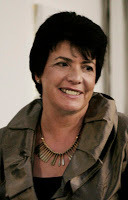
Website www.lindastrachan.com
Blog BOOKWORDS
Linda Strachan is the award winning author of over 60 books for all ages, from picture books to teen novels, and writing handbook Writing For Children
Alongside our dedicated Picturebook Den team, we invited a whole range of guest bloggers to add their take on anything relating to picture books. So if you have a moment you might like to browse these by clicking on the links to their blogs, featuring advice and fascinating viewpoints on a variety of subjects.

There have been blogs about where ideas come from, about the process of writing a picture book, about editing and reading picture books and our favourite books. We have heard from individual writers sharing their expertise and experience.
In this the final blog of 2012 I wanted to look back at the fascinating blogs our Guest Bloggers have written since we started, almost exactly a year ago at the very end of December 2011.
 When we invited Julia Donaldson, Children's Laureate and author of The Gruffalo and so many other wonderful picture books, she talked about how she goes about dramatising picture books
When we invited Julia Donaldson, Children's Laureate and author of The Gruffalo and so many other wonderful picture books, she talked about how she goes about dramatising picture books
Being truly international we had a guest blog from John Shelley talking about illustrating picture books for Japan in a Yen for drawing
Other amazing illustrators also shared their approaches and thoughts on working on picture books -
 - such as John Hamilton in A spontaneous reaction
- such as John Hamilton in A spontaneous reaction and Emmeline Pidgen in An illustrator's view

We heard about another area of picture book creation from designer and packager Tony Potter in Packagers, picture-books and pop-ups.
and from Kath Jewitt an editor, writer and project manager in her blog Let's get physical

Other bloggers talked about content and approach.
Hilary Robinson discussed How to talk to children about death in her insightful blog,

Penny Ives wrote about being a reading omnivore
 Karen King told us about My too dangerous picture book
Karen King told us about My too dangerous picture bookand Wendy Meddour described how inspiration for picture books is not always soft and fluffy in A little bit of trauma goes long way
 Natascha Biebow wrote about What motivates your characters an important ingredient in any picture book.
Natascha Biebow wrote about What motivates your characters an important ingredient in any picture book.
Alison Boyle discussed story themes in bee-rocracies and hierarchies
and she also wrote about Why we write
Joyce Dunbar showed how children's books are part of everything around us in Children's books and olympic ceremony
 As you can see our Guest Bloggers covered a wide range of fascinating topics this year and I hope you will agree that they truly complemented the wide range of informative blogs from our own team.
As you can see our Guest Bloggers covered a wide range of fascinating topics this year and I hope you will agree that they truly complemented the wide range of informative blogs from our own team.In 2013 we will be bringing you many new thoughts on all aspects of picture books and we have some great guest bloggers lined up too.
Why not leave a comment and tell us what your favourite Picture Book Den Blog was this year and if there is anything you would like to hear about in the coming months.
But for now on behalf of all of us here on PICTUREBOOK DEN
I wish you a happy healthy and successful year ahead in 2013
-----------------------------------------------------------------------------

Website www.lindastrachan.com
Blog BOOKWORDS
Linda Strachan is the award winning author of over 60 books for all ages, from picture books to teen novels, and writing handbook Writing For Children
Published on December 31, 2012 00:00



